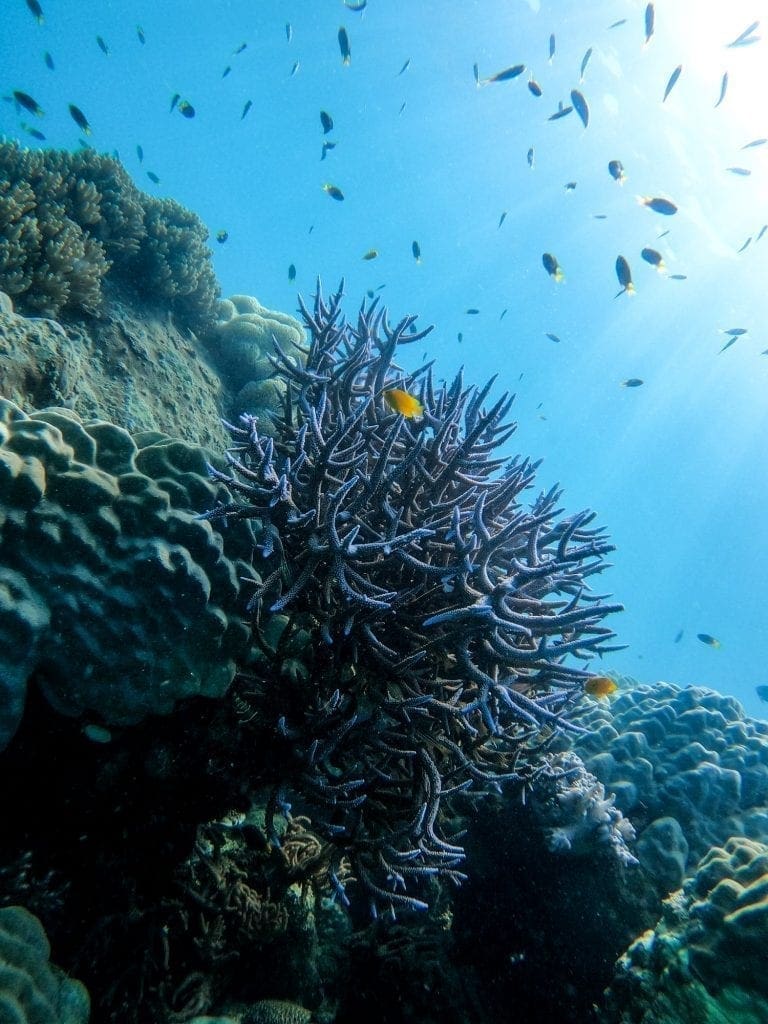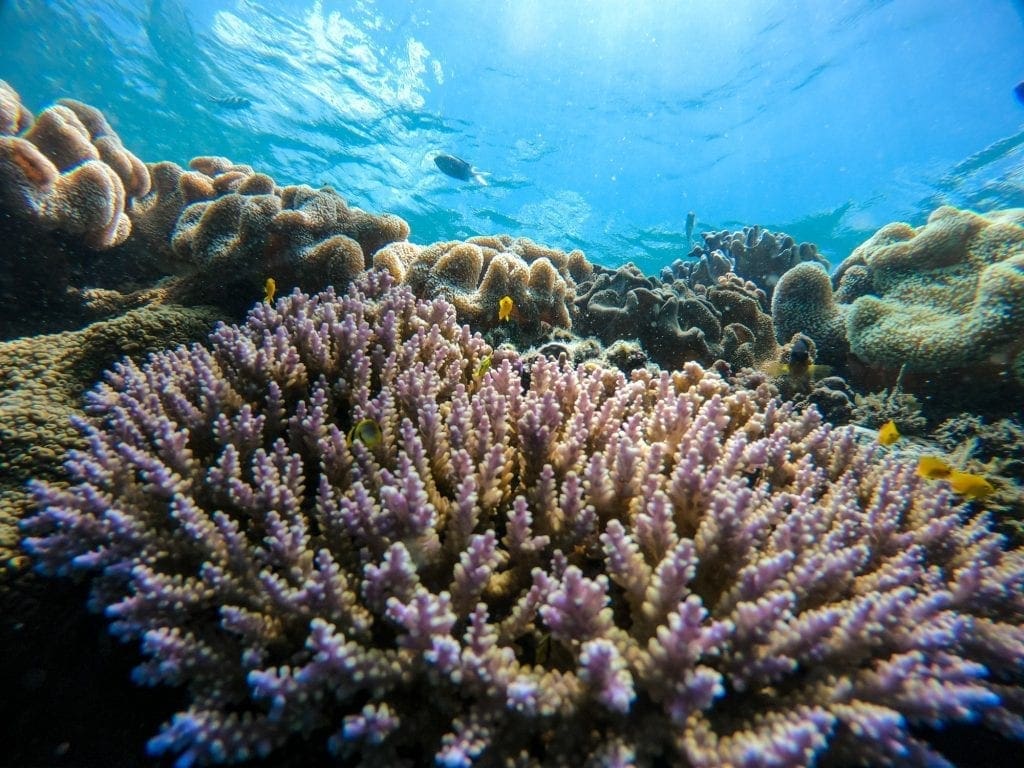What is coral? Is it an animal, plant or rock? To the naked eye, it is a bit tricky to tell! But the answer is actually all 3! With over 600 species of coral found on the Great Barrier Reef, a basic understanding of what you are looking at, really helps you appreciate the beauty of the fringing reef in the Whitsundays.

Is Coral an Animal?
Yes! Coral reefs are made up of tiny animals called coral polyps. Imagine a jellyfish, shrink it to the size of a pinhead and turn it upside down, then you are getting pretty close to a coral polyp. These tiny critters use their tentacles to capture microscopic plankton in the water column and feed a central mouth. These animals are fundamental to the start of reefs across the World. Settling on the bedrock, these animals are essential for reefs to form.
Is Coral a Plant?
Yes! Well, sort of! Once the coral polyps successfully secure itself to the seabed, the polyps recruit an algae called zooxanthellae. This algae embeds itself in the tissue of the polyp, giving the coral its colour. That is why the colours seen on the reef are often, green, brown and yellow. This algae acts like solar panels for the polyps. Creating energy by converting sunlight to sugars through a process called photosynthesis, the algae produce over 80% of the energy for coral and is essential for reef development.
Is Coral a Rock?
Yes! Well again, sort of! The coral polyp and the zooxanthellae have a unique relationship. This is called a symbiotic relationship, which in simple terms, means they rely on each other to survive. The polyp needs the algae to generate its food, whereas the algae need the polyp as a home! This complicated relationship is one of the things that makes coral so unique and special. Reefs consist of millions of these partnerships. Over time, reefs develop, and these separate coral colonies begin to compete for space. Just like trees in a jungle, reefs need sunlight to survive. When space becomes contested, the hard, reef-building corals generate a limestone skeleton to grow towards the surface, to have greater access to sunlight. This amazing process is what creates the incredible shapes and formations found on the Great Barrier Reef and why no two reefs are ever the same.
Here at Ocean Rafting, we are proud to showcase the fringing reefs of the Whitsundays. Our qualified team of Skippers, Eco-hosts, Marine Biologists and Master Reef Guides will be available to guide you around the snorkel locations, providing information on the stunning reefs in our region.
Love to snorkel? We recommend the Northern Exposure tour, with two snorkel locations this is the best way to experience the reef with Ocean Rafting. The Southern Lights tour is more beach focused but still offers one stunning snorkel location for you to enjoy. Whatever experience you choose, Ocean Rafting will no doubt provide you with memories of the Great Barrier Reef that last a lifetime!




